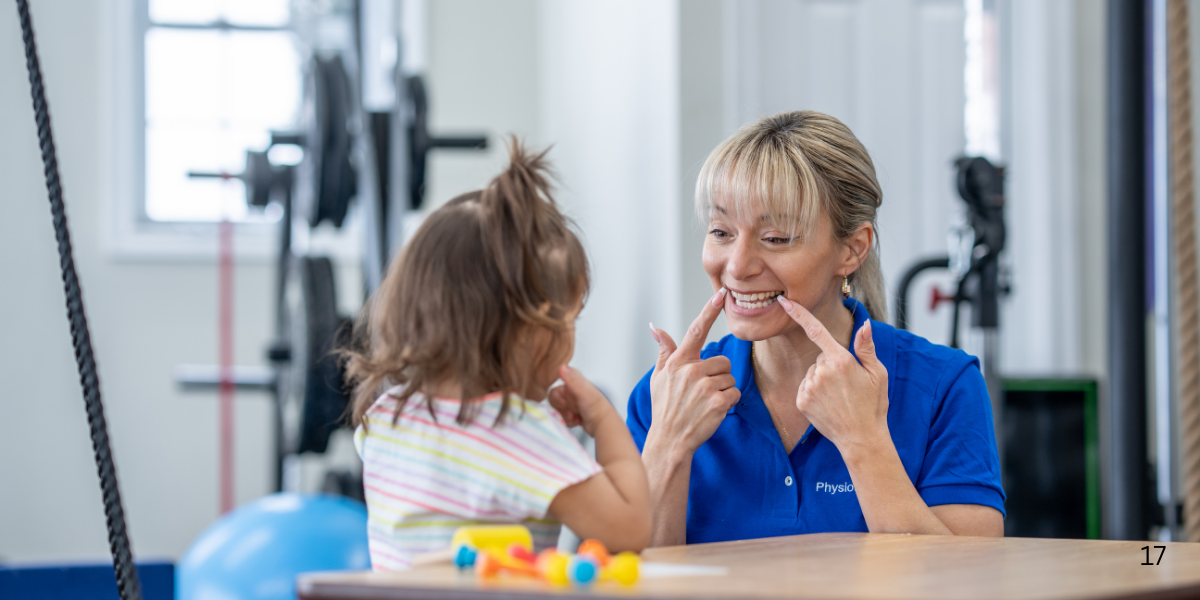Language development is one of the most important milestones during early childhood. Many parents want to know how to encourage toddlers to talk, especially when speech seems delayed or when vocabulary growth feels slow. While each child develops at a unique pace, consistent daily interaction, patience, and evidence-based strategies can make a significant difference.
Why Active Interaction Builds Language
Toddlers learn best through live, back-and-forth communication. Conversational turns—where an adult speaks, pauses, and waits for the child’s response—are proven to accelerate vocabulary growth and sentence development. Unlike passive listening, such as watching TV or listening to songs, interactive communication requires children to respond, experiment with sounds, and build confidence.
This is why limiting screen time is so important. While educational programs can expose children to new words, they cannot replace the direct human exchange toddlers need. Talking, narrating, and responding to children every day forms the strongest foundation for language.
Practical Daily Practices to Encourage Talking

Encouraging toddlers to talk is not about memorized drills. It’s about weaving language into everyday routines and play. Below are key strategies supported by child development experts.
Read Together
Shared reading exposes children to varied vocabulary, sentence structures, and narrative flow. Pause on pages, ask open-ended prompts (“What do you think is happening?”), and encourage the child to point or name items. This interactive reading style—dialogic reading—boosts expressive language more than reading alone.
Babbling Is Talking
Babbling represents the early stage of experimentation with sounds. When toddlers babble, we respond as though they are communicating: repeat the babble, expand it, or model the next sound. This reinforces that vocalizing is meaningful.
Limit Screen Time
The American Academy of Pediatrics recommends minimal screen exposure for toddlers. While occasional video content may be acceptable, it should never replace live interaction. The conversational back-and-forth that drives language growth must come from human interaction.
Narrate Frequently and Describe Everything
Narrating daily life—like “I am cutting the carrot” or “You’re putting on your blue sock”—turns ordinary tasks into language lessons. Describe what you see, what’s coming next, or what just happened. This constant verbal input gives toddlers more linguistic material to pick from.
Relax and Be Patient
Language unfolds in its own time. Pressure or frequent correction can shut down attempts. Keep interactions low-stakes: allow mistakes, celebrate attempts, and avoid turning therapy sessions into test drills.
Talk to Your Child Often
Make a habit of speaking directly to your toddler. Even simple comments like “Look at that bird” or “You have your cup” reassure them that their communication matters. Over time, they will begin to respond with words.
Use Flashcards Thoughtfully
Flashcards—especially with pictures of objects the child sees daily—can reinforce vocabulary. Use them as prompts, not drills. Ask, “What is this?” or say, “This is a dog,” and wait. Pair with real objects when possible.
Activities to Try
- Name and point games: During play, ask, “Where is the car?”
- Fill in the blank rhymes: e.g. “Row, row, row your ___”
- Toy labeling: Let the child pick a toy and label it: “Yes, that’s your teddy.”
- Action imitation: Do an animal sound or motion and pause for the child to mimic.
Avoid Baby Talk
While baby talk is common, clear, correctly pronounced words provide better models. Use simple words, but speak them correctly. Occasionally, exaggerate new sounds for clarity—not as a permanent pronunciation but as a learning scaffold.
Give Your Child Choices
Choices encourage expressive speech. Rather than “Do you want a snack?”, offer “Do you want an apple or a banana?” The act of choosing encourages verbal response and helps toddlers practice naming.
Give Your Toddler Time to Respond
Toddlers often need extra time to process, plan, and say a word. After asking, wait silently. Avoid filling the silence immediately. This pause gives children the chance to speak.
Offer Choices (Repeated)
Using choices is so effective it bears repeating. Each time a question is presented, keep the options limited and clear—this encourages verbal decision-making.
Play With Your Toddler
Play naturally draws speech. During building, pretend play, or imaginative games, describe actions, ask questions, and label objects. Following their lead in play ensures topics match their interest and vocabulary level.
Repeat the Toddler’s Communication in Words
If the toddler uses gestures, babbles, or a partial word, echo back in full form. E.g., if the child points at a ball and says “ba,” respond, “Yes, ball!” This technique, often called recasting, helps children move toward clearer speech.
Repeat Words
Frequent repetition helps toddlers internalize words. Label favorite objects (ball, dog, cup) multiple times in varied contexts—“Look at the red ball,” “Catch the ball,” “Roll the ball”—to solidify meaning.
Talk Slowly
Slow, clear speech gives toddlers time to parse the sounds. Rushing through sentences makes it harder for them to pick out individual words or imitate them.
Use Gestures and Signs
Gestures—pointing, waving—and simple signs (such as for “more” or “eat”) scaffold language. When paired with spoken words, they provide semantic support that can help toddlers transition toward verbal forms.
Ask Open-Ended Questions
As children’s comprehension grows, open-ended prompts invite them to respond with more than one-word answers. Instead of “Do you want juice?”, ask “What do you want to drink?” This encourages toddlers to stretch their expressive language.
Don’t Test
Test-like behavior (“Say this word”) can pressure children and reduce their willingness to try. Instead, embed language prompts in natural conversation and play. Keep it casual, not performance-based.
Expand on Their Responses
When a toddler expresses a word or partial utterance, expand by adding a word or two. If they say “car,” we respond “Yes, red car,” or “Car is fast.” Expansion models more complex structure without forcing them to imitate.
Follow Their Lead
Children are more motivated to talk about what interests them. If they reach for a toy dinosaur, talk about dinosaurs—how they move, their sound, and color. This natural alignment between interest and language encourages engagement.
Structuring Routines Around Communication
Daily routines are natural opportunities for speech development.
- Mealtime: Ask toddlers to request items, name foods, or help set the table.
- Bath time: Narrate steps like “wash arms” or “pour water,” and give them chances to repeat.
- Bedtime: Encourage choices such as which pajamas to wear or which book to read.
Consistency in routines helps toddlers anticipate and practice words in predictable contexts.
Language Development by Age
Knowing typical speech milestones helps parents recognize progress and identify when support may be needed.
- 12–18 months: Toddlers usually say their first words. Encourage labeling objects and responding to babbles.
- 18–24 months: Vocabulary increases rapidly. Use choices, repetition, and expansion to support two-word combinations like “more milk.”
- 24–36 months: Children begin forming short sentences, asking questions, and using pronouns. Encourage storytelling, pretend play, and open-ended questions.
When to Seek Professional Guidance
Speech timelines vary, but red flags include:
- No babbling by 9–10 months
- No single words by 15–18 months
- Fewer than 50 words or no two-word combinations by 24 months
- Limited response to name or simple instructions
- Regression in language skills
If these signs appear, consulting a speech-language pathologist (SLP) ensures timely evaluation and, if necessary, early intervention.
How Chapter 1 Daycare Supports Language Growth
At Chapter 1 Daycare, we build language development into our daily routines. Teachers narrate frequently, expand on children’s responses, and encourage choices throughout the day. Structured group activities, like story time and circle songs, strengthen vocabulary, while small-group play and one-on-one interactions give children space to practice speaking in a supportive setting.
We also work with families to ensure consistency at home. For example, if a toddler is learning to use two-word phrases, we share strategies like expansion and choice-based prompting so parents can reinforce the same skills outside of daycare. This consistency across environments helps toddlers gain confidence and fluency more quickly.
Frequently Asked Questions
How many words should my 2-year-old say?
By age two, many children can say around 50 words and start combining two words together. Some may speak more, some less, but consistent growth matters most.
Do toddlers learn better from talking or flashcards?
Talking and interaction are most effective. Flashcards are useful as a supplement but should always be paired with real-life conversations and play.
Should I worry if my child only babbles at 18 months?
Babbling is communication, but if no clear words appear by 18 months, it may be time to consult your pediatrician or an SLP.
Can screen time slow speech development?
Yes. Excessive screen time reduces opportunities for live interaction, which is the most important driver of speech development.
How can I encourage talking without making my toddler frustrated?
Avoid testing or pressuring. Use natural prompts, repeat words, give choices, and allow plenty of time for responses.
Conclusion
Encouraging toddlers to talk is about consistent interaction, patience, and creating opportunities for communication in everyday life. Reading together, narrating routines, repeating and expanding words, offering choices, and limiting screen time all build a strong foundation for speech. Supporting children with gestures, open-ended questions, and play makes language learning natural and enjoyable.
With a balance of patience at home and language-rich environments at Chapter 1 Daycare, toddlers gain the confidence to move from babbling to meaningful conversation.

